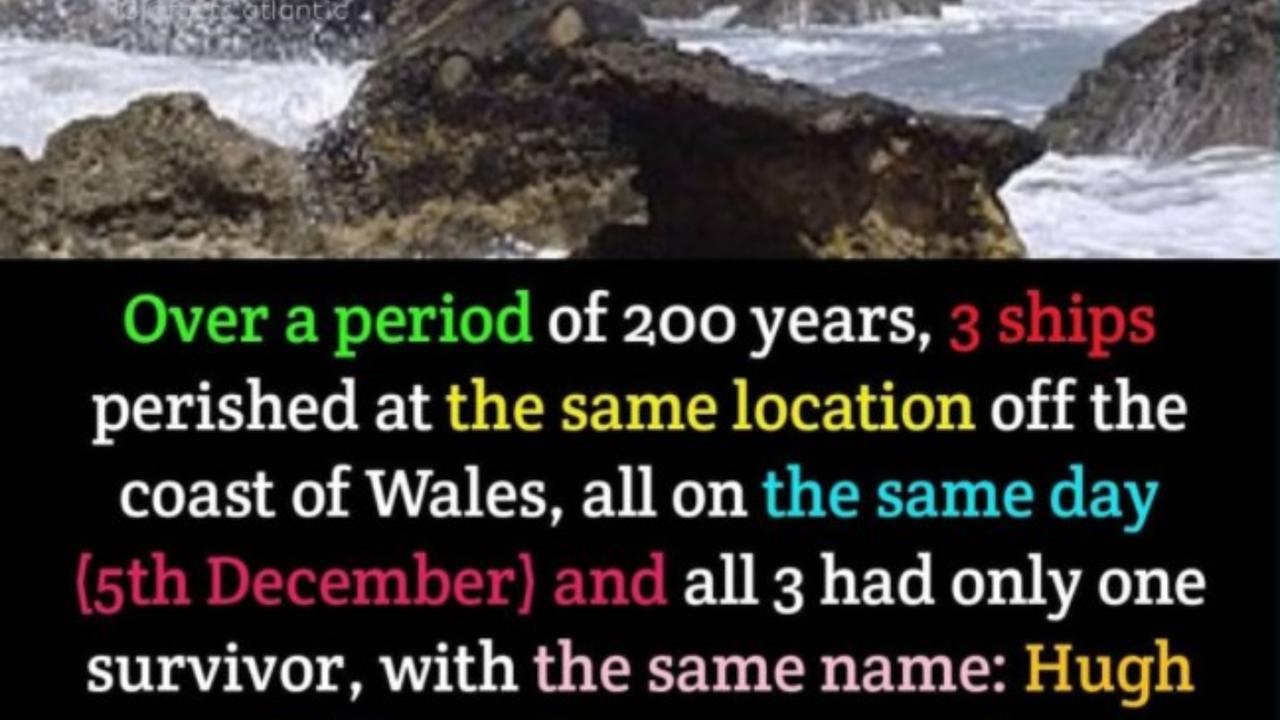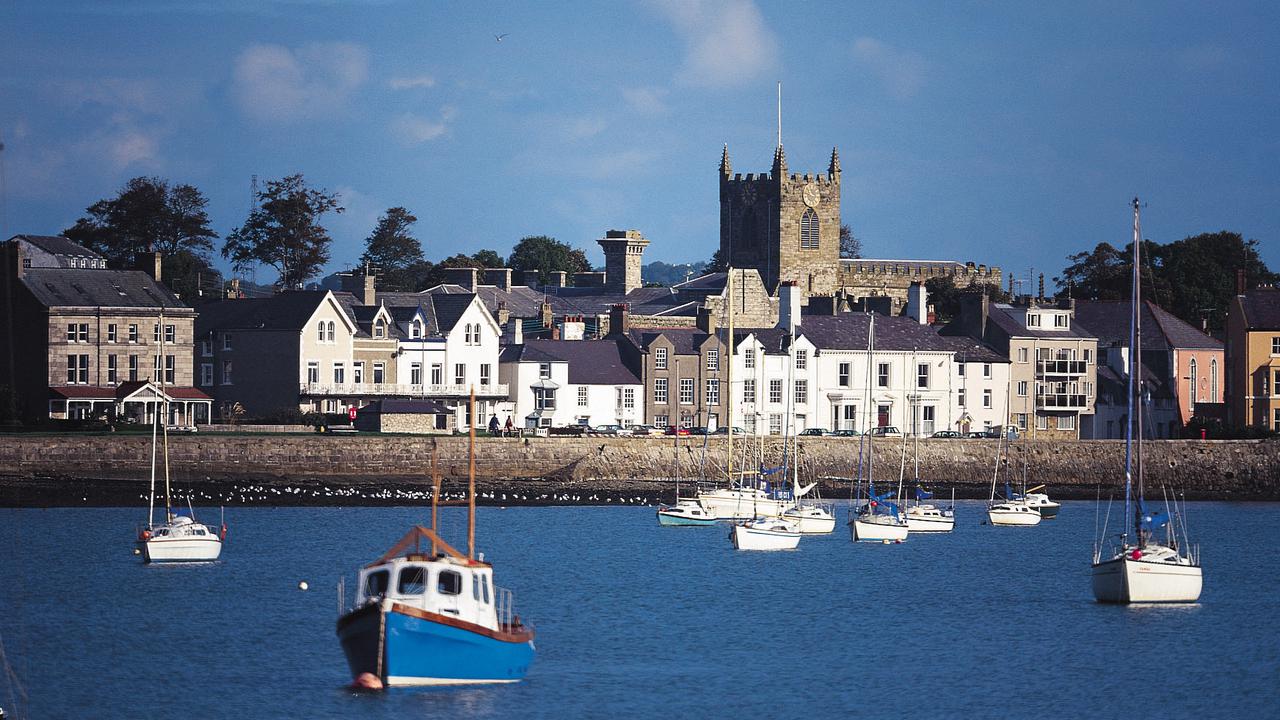The Statement
A Facebook post claims that three people with the same name were the sole survivors of three Welsh shipwrecks that occurred on the same date.
The April 21 post included an image of a rusted ship above the text: "Over a period of 200 years, 3 ships perished at the same location off the coast of Wales, all on the same day (5th December) and all 3 had only one survivor, with the same name: Hugh Williams (1664, 1785, 1820)."
At the time of writing, the post, from an Australian user, had been shared more than 760 times, attracting more than 100 comments and 1400 reactions.
The meme has been shared elsewhere multiple times. A similar post was shared on The Knowledge Factory Facebook page on May 14, 2017, attracting more than 6000 shares and 58,000 reactions. The story was also featured in a YouTube video with more than 460,000 views, while the image is also on an online meme library.

The Analysis
The story of Hugh Williams shipwrecks have been published with varying details for nearly 200 years, but the facts of the tale are somewhat at sea.
Multiple sources claim the maritime accidents occurred in the Menai Strait, a 24km-long channel in North Wales separating the island of Anglesey from the mainland where shipwrecks and other deadly maritime incidents frequently occurred.
According to a Welsh history website, the strait was dangerous to cross, with two opposing tides creating strong currents and whirlpools and ferries "would often capsize, or sink, and lives were frequently lost".
The website notes that the worst incident occurred in 1785 when a boat carrying 55 people ran aground on a sandbank. It says only one person survived - but the sole survivor is not named and the date is not included.
A Google Books search lists the earliest published reference to the Hugh Williams story as 1822 in the Philological Society of London's European Magazine and London Review's "Provincial Occurrences" section (page 190). However, unlike the Facebook post, it claims the 1820 incident occurred on August 5, not December 5.
"In the year 1664, on the 5th of December, a boat on the Menai crossing that strait, with eighty-one passengers, was upset, and only one passenger named Hugh Williams, was saved," the article said.
"On the same day, in the year 1785, was upset another boat, containing about sixty persons, and every soul perished with the exception of one, whose name also was Hugh Williams; and on the 5th of August, 1820, a third boat met the same disaster, but the passengers of this were no more than twenty-five, and, singular to relate, the whole perished, with the exception of one, whose name was Hugh Williams."
In the same year, the Brighton Gleaner published the story with the same details (page 391). In 1824, a publication titled, The Cabinet of Curiosities, published the story and attributed it to the Bristol Mercury (page 33). However, the archives of the newspaper do not appear to contain a record of the incident until 1841.
A book, Leigh's Guide to Wales and Monmouthshire, also published the story in 1831, but claimed there were 87 passengers on the boat in 1664, not 81. Another book, Scenes in North Wales (1833), includes different figures and dates again, and only mentions two of the incidents – 1783 involving 69 deaths and the second maritime accident on August 5, 1820.
The tale is mentioned in the Book of North Wales (1850), although its version also notes a fourth incident in the Menai Strait, on 20 May, 1842, involving a sole survivor - this time named Richard Thomas.
The Williams story also features in the Guide to North Wales (1860), which states "this extraordinary coincidence can only be explained by the circumstance that the name of Hugh Williams is very common in these parts". By 1888, the tale appears to have gone global, and it is included in newspapers in the US.
It is not clear whether any of these sources are accurate; they don't include any primary sources for the information and the details are inconsistent.
Welsh journalist Iolo Wyn Griffiths has written multiple works on local history, including about the ferries and bridges of the Menai Strait and the Hugh Williams tale in the History of Newborough.
In an email, Griffiths told AAP FactCheck the 1664 incident may be true but lacks evidence, while the details of the 1785 incident appear to be accurate; however, the date for the 1820 incident in the meme is false.
The History of Newborough states the 1664 and 1785 events occurred on the Caernarfon to Abermenai ferry and the sole survivor of the 1785 sinking was "Hugh Williams of Din Llwyden" who survived by lashing an oar to the mast of the ferry.
The book also notes the 1820 sinking was said to have occurred on December 5, and Hugh Williams of Bodowyr was the sole survivor. However it notes other versions of the legend list the date of the second sinking as September 5, 1785 and the third sinking as August 5, 1820.
"The legend puts the 1820 (sinking) as December 5, but the newspaper article that I found through Welsh Newspapers Online gives the date as August 5, and the entries for Llanidan parish register in the month after that date certainly indicates that some kind of ferry disaster had happened then," Griffiths told AAP FactCheck.
"I can understand the temptation to try to fit all three disasters into December 5, and the way the story has developed, that is indeed what has happened to make the August 1820 disaster into a December one."
He said one guidebook claimed that the survivor of the 1785 and the 1820 disaster was the same man, which is "not at all likely when he had died in 1808".
"If nothing else, it illustrates that the best stories are often only partly true."
Griffths added that Hugh Williams is a common name "so it is not impossible (but highly improbable) for there to be three sinkings, among the many that have happened, where there is only one survivor, with the same name".
Multiple websites that delved into the claim of the "unsinkable Hugh Williams" note early versions of the story give the date of the first sinking as August. They also identify that Hugh Williams is a common Welsh name and the Menai Strait is a dangerous body of water, making the coincidence not quite as unlikely as it first seems (see also here and here).

The Verdict
There is no conclusive evidence to prove all three events happened as described.
Multiple publications and websites state that the 1820 sinking occurred on August 5 not December 5, the date claimed in the post. A Welsh author and historian told AAP FactCheck he could not prove the 1664 incident ever happened, while the date for the 1820 incident in the post was false.
Nevertheless, Hugh Williams is a common Welsh name and there were multiple boating accidents on the Menai Strait, so it is possible three people with the same name were the sole survivors in maritime accidents over the 200-year period - just not on the same date.
Partly False - Content that has some factual inaccuracies.
AAP FactCheck is an accredited member of the International Fact-Checking Network. To keep up with our latest fact checks, follow us on Facebook and Twitter.












